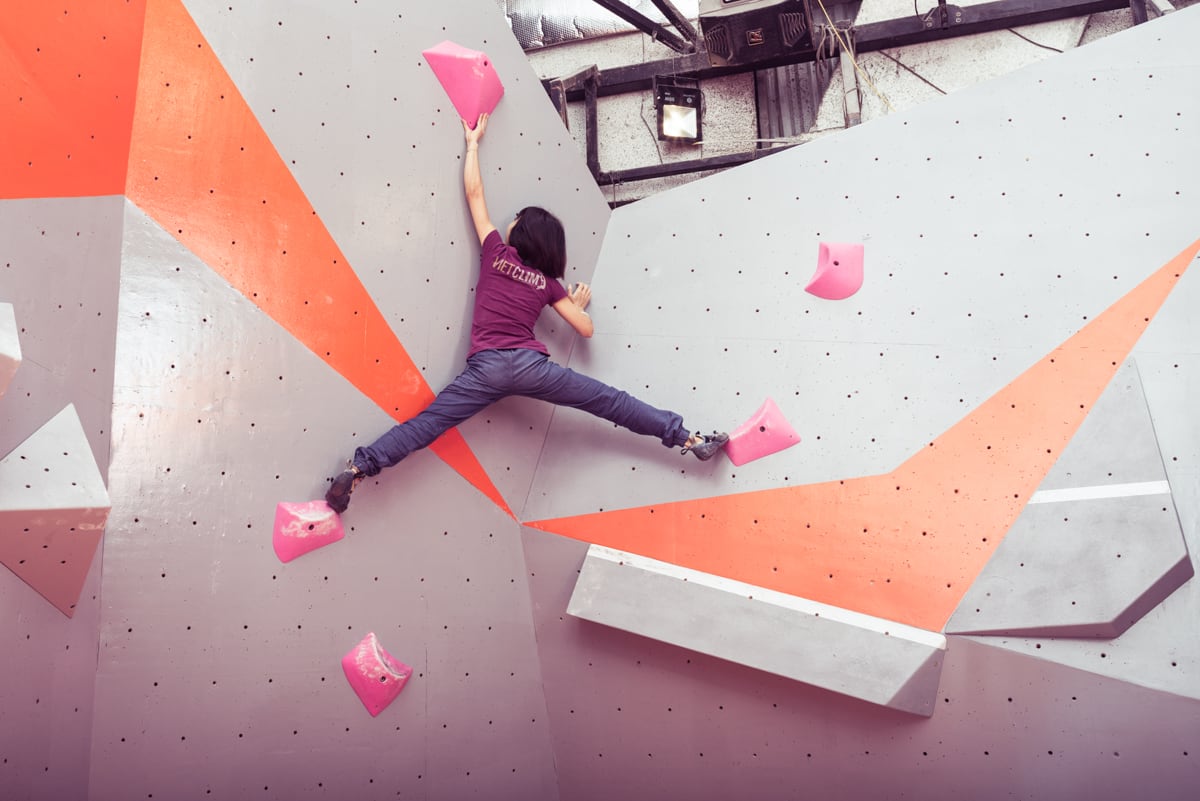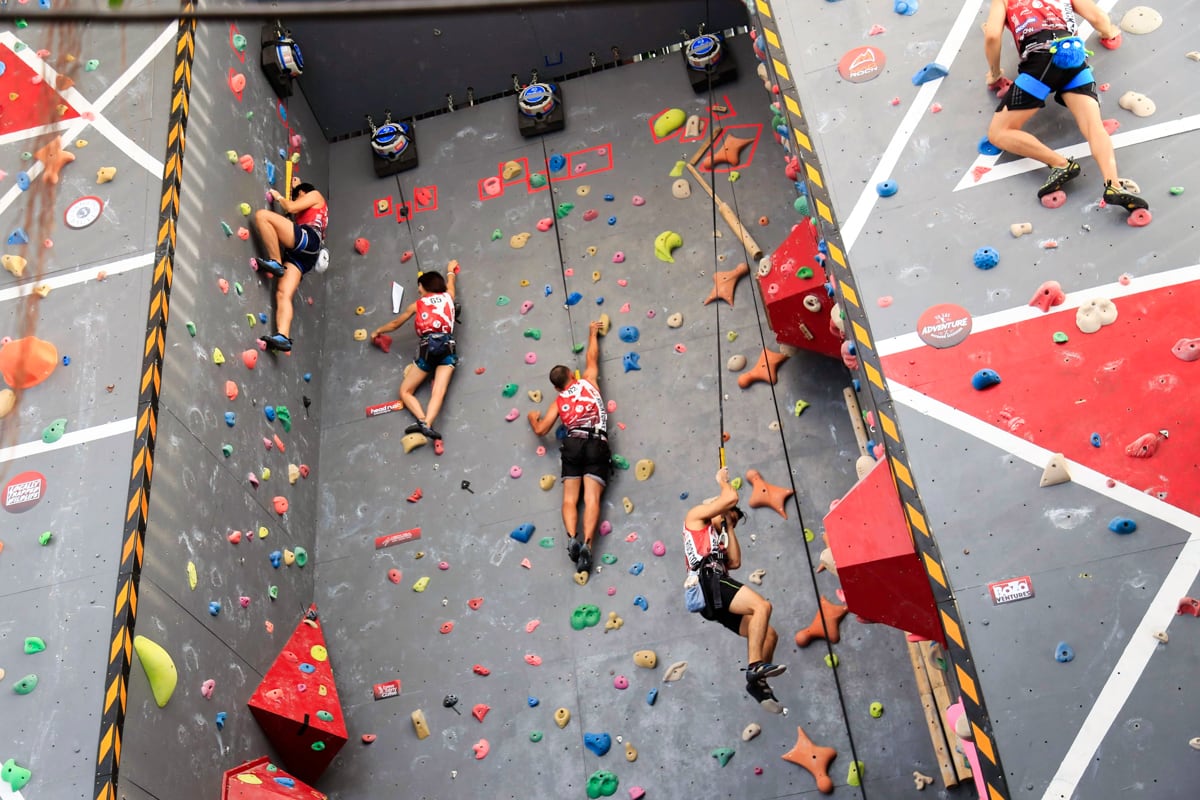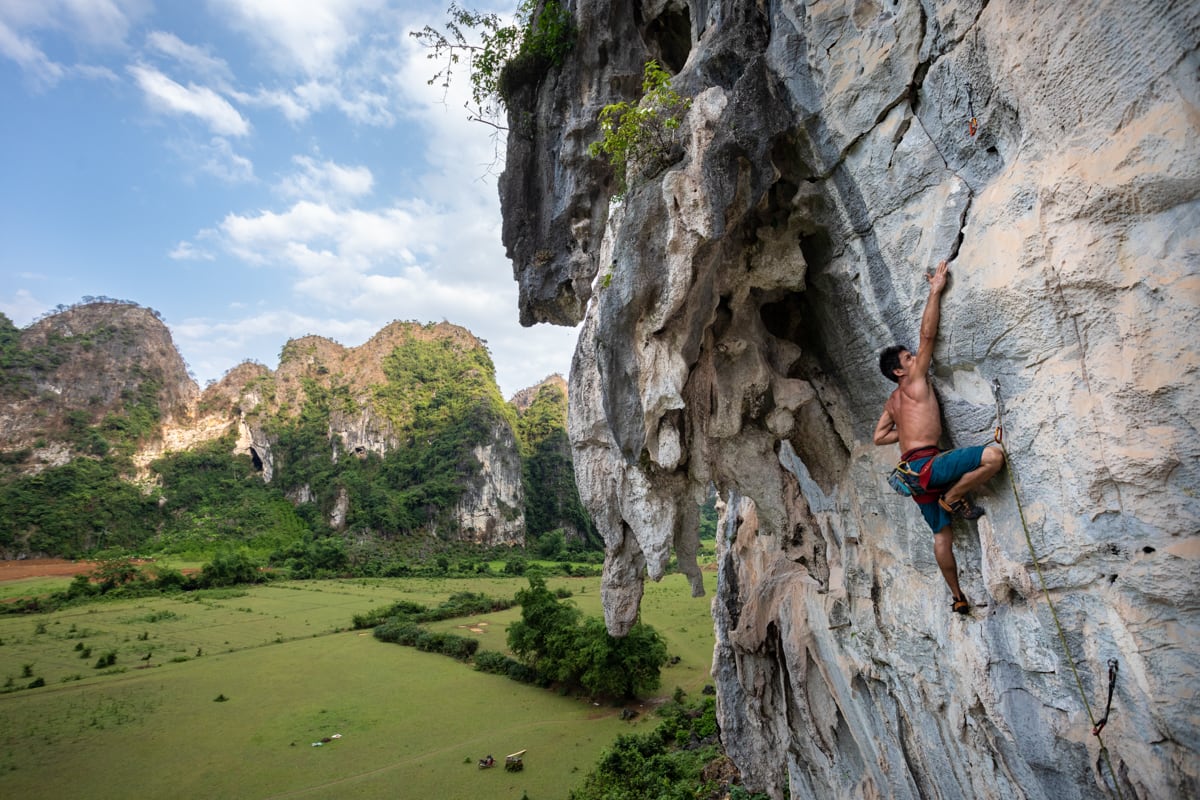Across the world, sport climbing started to gain traction in the 80s. In 2018, renowned rock climber Alex Honnold made history when he ascended 600 meters on the El Capitan wall, without using ropes or other safety gear, putting his life in danger to push the boundaries of rock climbing. And had COVID-19 not postponed the 2020 Olympics, we would have seen sport climbing for the first time on global TV.
Meanwhile in Vietnam, sport climbing had just started to take off in the last few years with the opening of indoor gyms, making it more accessible to a wider audience. We speak with some of the leaders in the industry – Jean Verly from VietClimb, Paul Massad from Push Climbing and Baptiste Rouch from Nival – about their vision.
What is Nival and why did you create this co-op?
[Baptiste]: Nival started off as a Youtube project to promote climbing in Vietnam through documentaries and short videos. After two months, with a vision to make climbing better and bigger in Vietnam, I redefined Nival as a tool to give local climbing communities a common goal – evolving as one coherent ecosystem.
The first stage, where we are now, is for the community to come together under the banner of Vietnam Climbing Circle to better understand the needs of the community and to come up with a development plan. Phase two is to launch a large-scale crowdfunding campaign. I have good leads to find sponsors who share our vision. In the meantime, we will be supporting our local “craftsmen”, promoting T-shirt makers, manufacturers of chalk bags and crash-pads, photography services providers, ect.
This should lay the foundation for the third phase where Nival becomes a brand that helps climbing entrepreneurs grow their businesses. And finally, with everything else going well, our aim is to build a co-op strategy where Nival members rally around a socially sustainable business model contributing to the development of the country through the climbing community.
Nival aims to spread the development of climbing in Vietnam. | Source: Nival- Climbing Stories In Vietnam
This year, Vietnam officially declared rock climbing a national sport which is quite exciting for the community. What does that mean to you and the future of climbing in the country?
[Jean]: Well, it’s a bit more complex. Indeed, a national training was organized for the first time ever by the Ministry of Culture, Sports and Tourism in September in Huu Lung following a request from the Province of Lang Son to acknowledge and legalize our bolting and climbing development which has started in 2012 over there.
While it’s a significant milestone for climbing organizations, it’s only a first step before a true recognition. The next step is creating a Vietnamese Climbing Federation alongside making climbing walls part of public infrastructure, funding youth programs to source local talents and send athletes to international competitions.
[Paul]: This declaration is great news and is quite emotive to think that this labor of love has been accepted and embraced in a community that, when we first arrived, looked at the idea with indifference and skepticism. Vietnam’s landscape for climbing is an unpolished diamond that can only be polished with sweat and discipline.

What are you actively doing to spread the world of climbing to a larger audience?
[Jean]: We have adopted both a top-down and grassroots approach: lobbying and capacity-building with central and local authorities, as well as focusing on community outreach through competitions, social events and production of quality content.
[Paul]: Teach and preach. At Push Climbing, we take a group, family approach, especially since many of our customers are just starting their climbing journey and we are able to offer a stepping stone within a controlled environment, with various membership and pricing options available. We offer online and offline courses, as well as organizing team building activities, workshops, gear tryouts and competitions.
[Baptiste]: We, the climbing community in Vietnam, have been sharing our passion for climbing by showing how great this lifestyle can be in terms of fun and safety. And as cheesy as it may sound, it also makes you a better person.
This year, we started filming and documenting climbing gyms and climbing trips, as well as organizing, through Nival, community clean-ups in the places where we climb. I also consult climbing craftsmen to help their ideas blossom, learning from them in the process. It’s a fair and cool exchange between passionate people.

What values does climbing culture instill within us?
[Baptiste]: First of all, it’s a lifestyle. And even though climbing is about individual performances, the fact that there is always someone taking care of your safety (through belaying in rock climbing and spotting in bouldering), it makes it a community sport. We also share the same values, such as environmental conservation. We are all aware that we are one with nature when we rock climb and we strive to protect it.
[Jean]: Honesty, reliability and environmental awareness.

I heard the North is known for sport climbing (climbing with ropes) and the South is more into bouldering (without ropes). Tell us more about the climbing culture in Vietnam.
[Jean]: For outdoor climbing, it is probably true, as the North has mountains while the South is flat. However, for indoor, Saigon has more clubs offering sport climbing. It really depends on climbers, and many climbers from Saigon come to Huu Lung to practice sport climbing while some climbers in Hanoi only focus on bouldering.
[Paul]: This is mainly geographical since the Mekong Delta is not known for its abundant cliffs and hillsides. In an urban environment, setting up a bouldering gym requires less gear and lesser heights, so suitable space is easier to find.
Push Climbing has automatic belays that provide an instant grade of independence for beginners – quite a different approach. Sport climbing is also offered and customers can choose to handle their own ropes after having passed a knowledge and skill test.
Bouldering is also a great vehicle for community-building: the folks can get together on the weekend, drive somewhere to clean and climb, then be back at home by sunset. But to develop sport climbing, bolt by bolt, is truly a gargantuan task as Jean can probably testify. That’s why the urban Saigonites have mostly opted for bouldering facilities.

Where are some places our readers can go to learn and enjoy the sport?
Indoor:
Hanoi | VietClimb
Ho Chi Minh City | Push Climbing – District 2
Ho Chi Minh City | Vertical Academy – District 2
Ho Chi Minh City | Saigon Climbing Center – Binh Thanh
Outdoor:
Huu Lung for sport climbing
Cat Ba for deep water solo
